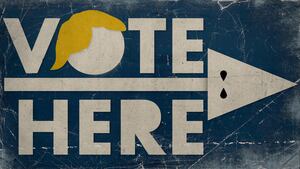Minnesota law enforcement’s latest spate of terror started with the murder of George Floyd and has continued unabated, with cops firing rubber bullets and tear gas—in the midst of a respiratory pandemic—at peaceful protesters. They’re far from alone. Officers have launched attacks against demonstrators in cities all over the country, Omaha, San Francisco, Portland, Columbus, Dallas, New York and Denver among them.
People in Michigan protesting Floyd’s murder and centuries of state-backed violence against black folks were met with chemical munitions liberally fired off by police. What a difference from how the cops behaved one month ago, when gun-toting white folks who stormed the Michigan statehouse because they wanted haircuts weren’t given so much as a citation.
Cops are rioting all over this country right now, again using militarized police violence to retaliate against people for daring to decry militarized police violence, and then suggesting the response is how the violence all began. These brutalities by police in recent weeks—the Floyd lynching, the murder of Breona Taylor, the Tony McDade killing, and now the rubber bullets, teargas, batons, fists and vehicular assaults—are both inhumane and familiar.
While there may be a tiny minority of agitators actively looking to assault police officers, pro-cop factions use them to smear hundreds of thousands of protesters nationwide, and to excuse police violence against them. The irony couldn’t be more striking or Trumpian: The group that is fundamentally tainted is trying to use a very few bad protesters to taint a huge movement of people rising up in righteous anger over rotten, racist policing.
But the latest assaults by officers on peaceful protesters are yet another chapter in America’s story of state-funded racist oppression.
The latest additions to that story over the last few weeks, and particularly in the last three days, have made clear that police reform is useless, most certainly as a policy and probably even as a thought exercise. The problem isn’t a few bad apples. It’s the barrel.
Reform advocates claim “the system is broken,” a refrain that actively ignores that the system is actually functioning in accordance with its original design. One of the earliest colonial statutes, dating back to 1686, required, under penalty of a fine, all white colonizers to “apprehend, chastise and send home” black folks they encountered moving freely without permission from their white enslavers. Those violently anti-black “slave patrols” are the roots of American policing and use of the race soldiers to “protect and serve” white property, power and supremacy. They also help explain the ethos of white American self-deputization on display in the murder of Ahmaud Arbery and what could almost be regarded as attempted murder by Amy Cooper. (Also, this asshole.)
Not every cop is Derek Chauvin, the former Minneapolis police officer who casually and fatally applied his weight for nine minutes to George Floyd’s throat. In fact, most cops are actually Tou Thao, Chauvin’s literal partner in the crime of lynching Floyd—officers who either look the other way or stand watch. The former and the latter are both bad cops. The whole policing system is the problem.
There’s the cost of police corruption and abuse, which is rampant and pricey. Settlements for police misconduct cost New York City $69 million in 2019; Chicago $100 million in 2018; and Los Angeles more than $350 million between 2005 and 2018. Chauvin had previously been the subject of “at least a dozen police conduct complaints that resulted in no disciplinary action.” Thao had six complaints filed against him as well as a brutality lawsuit that cost the state $25,000. (“I had no choice but to punch him...in the face,” Thao said in a deposition.)

Even with police departments’ notorious complicity in covering up officers’ criminal behavior, a 2019 USA Today investigation found more than 85,000 cops “have been investigated or disciplined” for misconduct over the last 10 years, with those reports often hidden from the public or even other police departments when officers moved between them. “Officers have beaten members of the public, planted evidence and used their badges to harass women,” the report notes. “They have lied, stolen, dealt drugs, driven drunk and abused their spouses.” Few of those officers faced any punishment beyond brief stints of desk duty. In the case of Floyd’s murderers, unequivocal documentary video proof of murder left the state unmoved. It took the loss of precious property to stir officials to the minimal action.
Police departments aren’t just bad at dealing with crimes committed by their own, they also devote a surprisingly small sliver of their time to solving violent crimes, one of the ostensible reasons we pour tax money into policing in the first place. David Graeber of the London School of Economics writes that “police sociologists report that only about 10 percent of the average police officer's time is devoted to criminal matters of any kind. Most of the remaining 90 percent is spent dealing with infractions of various administrative codes and regulations: all those rules about how and where one can eat, drink, smoke, sell, sit, walk, and drive.” A 2019 report from the Vera Institute of Justice cited by The Intercept found just “40 percent of crime victims report their experiences to police… and fewer than 25 percent of reported crimes are cleared by arrests.” Of those, less than 5 percent are for violent crimes, while 80 percent are for “low-level offenses such as “drug abuse violations” and “disorderly conduct.”
And those crimes rarely ensure broader public safety, but are symptoms of a larger issue of hypercriminalization. In recent decades, according to the Center for Popular Democracy, California has added 1,000 new crimes to its books. Michigan has 3,102 criminal offenses, while New York City “has 10,000 crimes, rules and codes the police can enforce.” Researchers write that many cities criminalize “innocuous activities like being in a park after hours, drinking alcohol in public, panhandling, spitting and sleeping on the subway,” and in at least one case, “the wearing of saggy pants.” Cops only apply these “broken windows” laws in black and Latinx communities—though studies show that when black folks are in majority white neighborhoods, they are also disproportionately cited for minor infractions. And still, there’s no evidentiary correlation between aggressive policing and crime reduction.
But every three seconds, police arrest someone, permanently altering lives with incalculable collateral consequences including loss of employment, housing, child custody and deportation. (After arrest, black folks are more likely to be charged, more likely to be wrongfully convicted and generally given heftier sentences.) These consequences devastate entire communities, especially vulnerable black areas already ravaged by decades of racist policymaking at every level.
For the most part, cops ensure “public safety” only insofar as they reassure white folks that their power and property is protected from —and valued more— than literal black lives. And they enrich the coffers of the same white supremacist institutions that have always profited off racist capitalist exploitation of black folks.

A woman passes by NYPD officers during a 2014 protest demanding justice for the death of Eric Garner.
Eduardo Munoz/ReutersAfter the police murder of Eric Garner in 2014, miffed at what the police union head labeled the “hostile anti-police environment in the city,” cops in New York City protested by engaging in a “virtual work stoppage.” That mostly meant officers stopped issuing tickets for myriad petty low-level crimes and other minor violations. The intent was to show ungrateful critics, most notably Mayor Bill de Blasio, what a hellscape the city would come without being policed to the teeth. Instead, crime fell 4.6 percent and the excesses of broken window policing were made clear.
We’re in another one of those moments. Despite nearly a nearly 20 percent NYPD absentee rate at the peak of the coronavirus pandemic, crime fell across the city. Stay-at-home orders probably played some part, though the talk among many officers just months ago had been about how crime and chaos were about to return with a vengeance, especially as (overdue) bail reforms and COVID-19-related releases meant fewer New Yorkers were locked up.
But as with a number of other cities in the country, the crime numbers have mostly gone down. Though it’s unlikely it’ll happen because of fears of how the news would play in certain sectors, de Blasio and other mayors should recall those figures when they consider next year’s budget cuts.
As attorney and journalist Josie Duffy Rice has written, most white Americans already live without police in their communities. “What most of them cannot imagine is someone not policing black, brown and poor people.”
Moving away from policing as we know it would take time, funding priority changes, and a shift in the Overton window of possibility. But most of all, it would take a profound change in the value this country places on black life.


